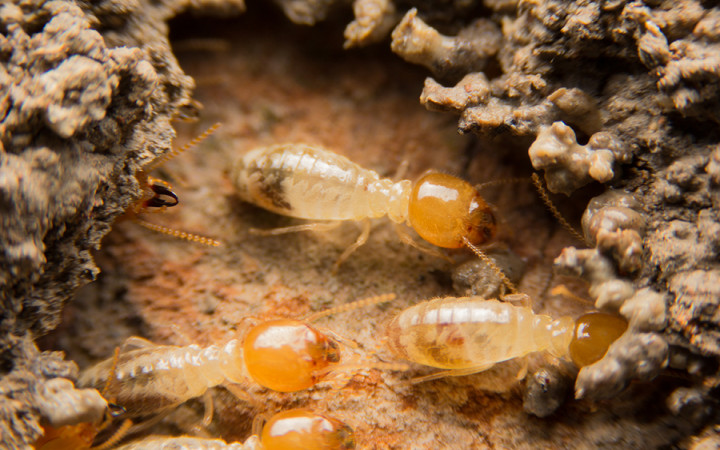Today’s Wonder of the Day was inspired by Darren. Darren Wonders, “Why do termites eat wood?” Thanks for WONDERing with us, Darren!
What do you think of when you hear the word "home"? For many, home conjures images of safety and security. Home is where the heart is, right? It's the place where we can always go to be surrounded by those who love us.
Of course, our home is also usually a physical building, such as a house. Its space is subdivided into many different rooms with different functions. It serves to keep us warm and dry.
From time to time, though, our houses may be subject to threats. These threats often take the form of natural disasters, such as flooding, hurricanes, tornadoes, and fires.
However, our houses might also be threatened with destruction from within by an infestation of dangerous insects. Although it might seem impossible that tiny insects could ever threaten a large house, wood-eating termites can indeed damage a house to the point where it becomes structurally unstable.
Scientists estimate that termites have been around for about 50 million years, which means they existed at the same time as the dinosaurs. Today, there are nearly 3,000 species of termites that can be found all over the world.
Termites thrive in warm tropical areas, but they can be found just about anywhere the ground doesn't freeze solid in the winter. Many people think these insects look like ants, but they're actually more closely related to the cockroach.
To the misfortune of homeowners around the world, a termite's diet primarily consists of cellulose, a tough fiber found in plants, such as shrubs and trees. Cellulose must be broken down by an enzyme called cellulase.
Termites don't produce cellulase, but they have microorganisms, including bacteria and protozoa, living in their digestive systems that help them break down cellulose into digestible substances that give them the nutrients they need to live.
Many termites feed on trees and rotting logs in wooded areas. However, they can't tell the difference between these types of wood and the wood that's used to build your house. If they manage to find exposed wood inside your house, they will eat it.
It would take a single termite over 3,000 years to eat even a small home. Unfortunately, termites are insects that live in groups…really, really large groups!
A single termite colony could consist of 15 million termites or more, and they eat around the clock, all day every day. Large termite colonies can eat as much as one pound of wood in a day.
Known as "silent destroyers," termites can be hard to detect. Often, they're detected only after significant damage has been done to a home. Experts estimate termites cause over $5 billion in damage to homes every year.
If a homeowner discovers a termite infestation, it will be necessary to hire a professional exterminator. A variety of treatment methods, including baits, repellents, and pesticides, may be used to kill the termites and prevent them from returning. Depending upon the extent of the infestation and the damage done, extensive and expensive repairs may also be necessary.




